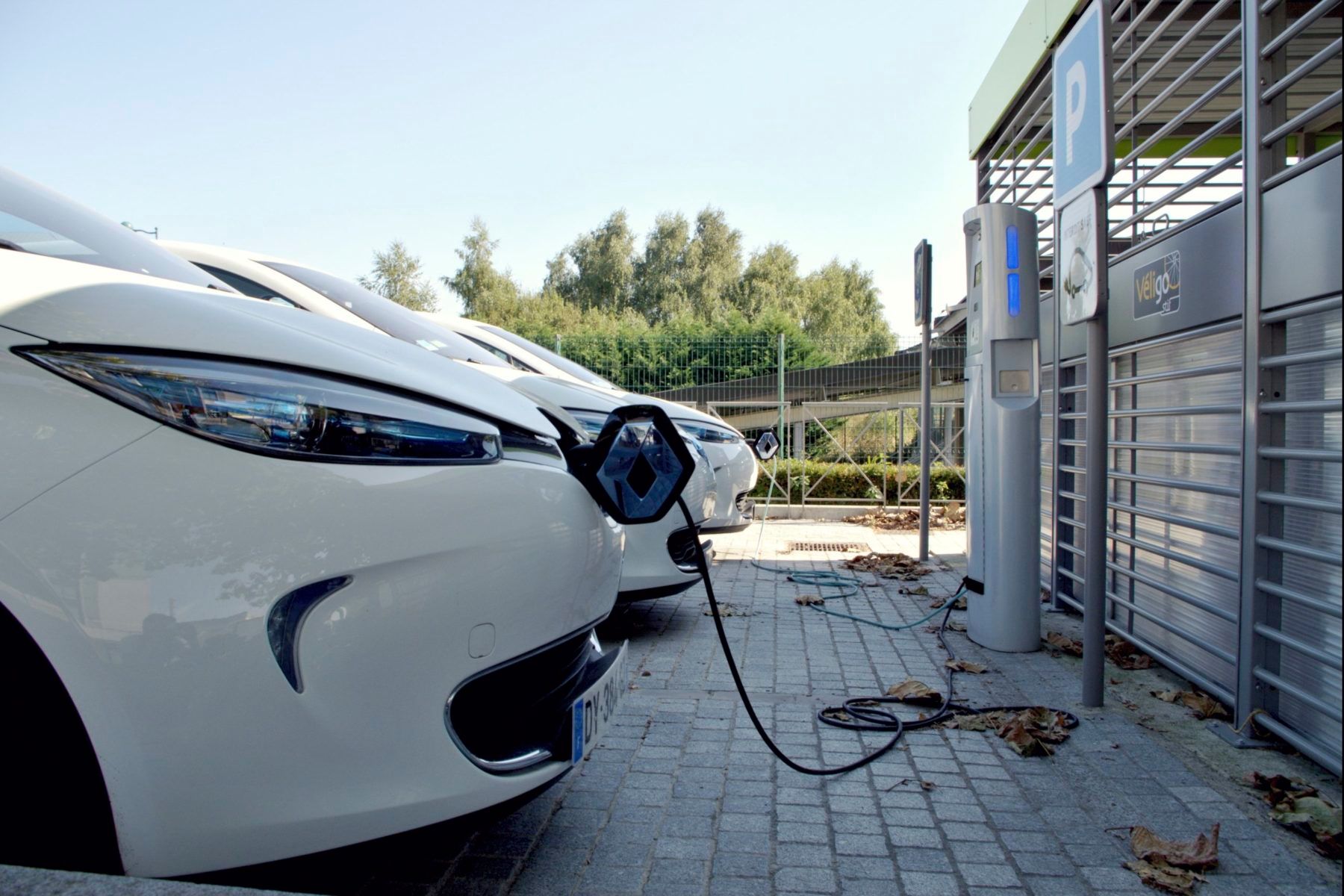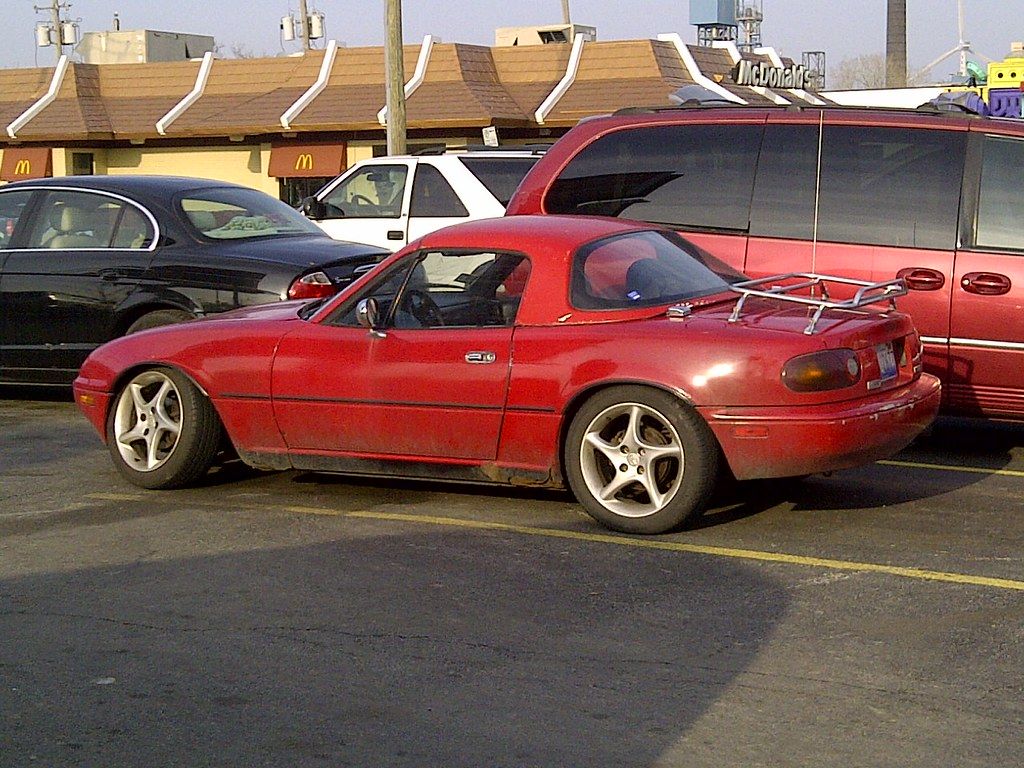
When we talk about Japanese automobiles, it’s practically a reflex to praise their legendary reliability, their relentless push for innovation, and the sheer driving pleasure many of them offer. From the bulletproof endurance of a Toyota Camry to the zesty performance of a Honda Civic Si, the Land of the Rising Sun has gifted us with some of the most cherished and dependable vehicles on the planet. Indeed, in an industry often fraught with shortcuts and questionable engineering, Japanese manufacturers have largely set the gold standard for what a car *should* be: a faithful companion that gets you from A to B, year after year, without breaking the bank or your spirit.
Yet, even the most esteemed manufacturers, those titans of automotive mastery, can have their off days. It’s a harsh truth, but one worth acknowledging: not all that glitters is automotive gold, even when it comes wrapped in a meticulously engineered Japanese badge. In my extensive journey through the car industry, I’ve stumbled upon a few Japanese models that, frankly, veered dramatically from the path of excellence we’ve all come to expect. These vehicles serve as stark reminders that missteps, while rare, do occur, proving that even a legacy built on perfection can have its occasional, glaring flaws.
So, prepare yourselves, fellow gearheads and savvy car buyers, as we embark on a no-holds-barred journey through the annals of automotive history to unmask the Japanese duds that, despite their badges, are best left untouched. This isn’t just a list; it’s a public service announcement, a guide to help you navigate the tricky waters of the used car market and avoid the mechanical melancholy that these particular models have inflicted upon countless unsuspecting owners. Get ready for some hard truths, some detailed breakdowns, and perhaps, a few surprising revelations about the vehicles that simply failed to measure up.
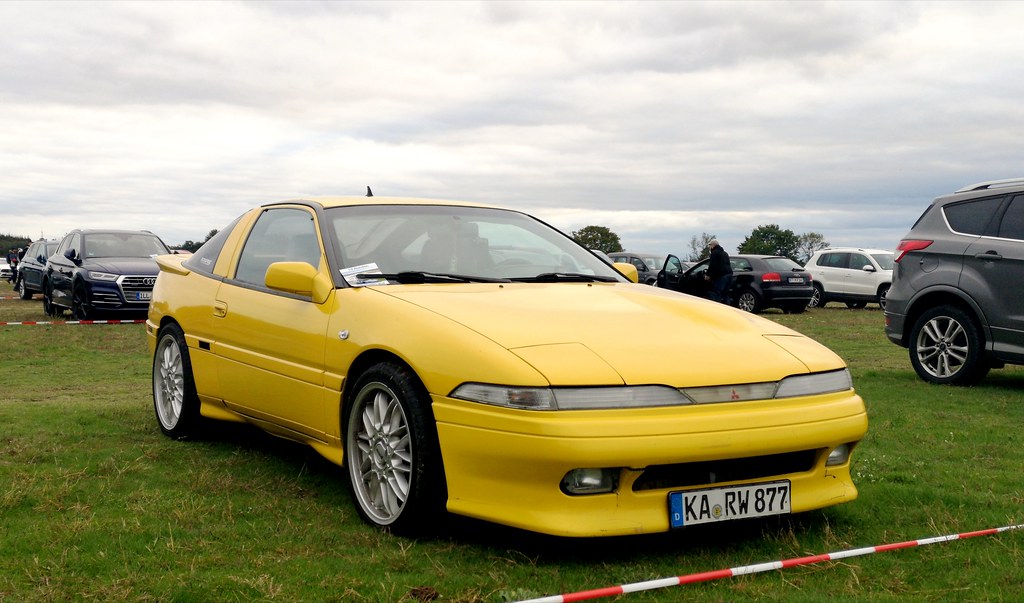
1. **Mitsubishi Eclipse**Once heralded as a paragon of Japanese innovation and a darling of the tuner scene, the Mitsubishi Eclipse’s legacy is now unfortunately marred by a litany of notorious recalls and chronic reliability issues. The third-generation model, in particular, saw a significant downturn, moving away from its sporty roots into a realm of mechanical disappointment. While earlier models captivated drivers, the early 2000s versions began to show cracks in the veneer, becoming a definitive example of what can go wrong when cutting-edge dreams don’t quite align with reality, ultimately cementing its place among the least reliable Japanese cars.
The problems were widespread and concerning. We’re talking about frequent brake failures due to a corrosive ABS unit, especially noted in 2005 models, and faulty fuel tank mounting brackets that prompted recalls in 2008. These weren’t minor inconveniences; they were serious safety concerns that understandably dented the Eclipse’s once-lustrous reputation. Furthermore, owners of models between 2000 and 2005 reported significant transmission issues, including slipping, difficult shifting, and even complete failure, making for a truly frustrating and costly ownership experience.
Beyond these critical failures, the Eclipse also suffered from persistent idle control problems, which led to starting issues and inconsistent idle speeds, causing headaches for drivers trying to get their day started. Oil leaks from components like valve covers were also common, risking serious engine damage if not addressed promptly and diligently. For those who owned the third-generation, the unrefined automatic transmission was a constant point of contention, stripping away any semblance of driving pleasure that the Eclipse name once promised.
And let’s not forget the more cosmetic, yet equally annoying, issues that plagued various model years. Owners frequently noted that the rims and wheels were easily damaged or suffered from premature wear and tear, making the car look tired long before its time. The tires themselves also wore out more quickly than expected, adding to maintenance costs. Even the interior didn’t escape criticism, with cheaply made parts prone to breaking. All in all, the Mitsubishi Eclipse, particularly in its troubled generations, stands as a stark warning that a cool facade doesn’t guarantee a quality machine underneath.
Car Model Information: 2007 Mitsubishi Eclipse Spyder GS
Name: Mitsubishi Eclipse
Caption: Fourth-generation Mitsubishi Eclipse GS coupe
Manufacturer: Mitsubishi Motors
Production: 1989–August 2011 (906,876 units)
ModelYears: 1990–2012
Assembly: Normal, Illinois
Class: Sport compact
BodyStyle: liftback,coupé
Layout: Front-engine, front-wheel-drive layout,Front-engine, four-wheel-drive layout
Predecessor: Mitsubishi Cordia,Mitsubishi Starion
Categories: 1990s cars, 2000s cars, 2010s cars, All-wheel-drive vehicles, All articles with unsourced statements
Summary: The Mitsubishi Eclipse was a sport compact car manufactured and marketed by Mitsubishi over four generations in the 1990–2012 model years. A convertible body style was added during the 1996 model year.
The first two generations were marketed simultaneously as rebadged variants, including the Eagle Talon and Plymouth Laser — and were a byproduct of Mitsubishi Motors and Chrysler Corporation’s close alliance. Their partnership in turn gave rise to Diamond-Star Motors (DSM). In Japan, the first two generations were sold at a specific Japanese retail chain called Mitsubishi Car Plaza. The third, 2000–2005 generation shared an extended wheelbase variant of their platform with the Chrysler Sebring and Dodge Stratus. In May 2005, the fourth, and final generation Eclipse was introduced, replacing the Chrysler platform used for the third generation with the PS platform.
According to Mitsubishi, the Eclipse was named after an unbeaten 18th-century English racehorse that won 18 races in a row and then retired.
At the end of August 2011, the final Eclipse was manufactured and auctioned for charity.
In 2017, Mitsubishi resurrected the Eclipse name on a compact crossover vehicle, called the Eclipse Cross.
Get more information about: Mitsubishi Eclipse
Buying a high-performing used car >>>
Brand: Mitsubishi Model: Eclipse
Price: $5,500 Mileage: 115,000 mi.
Read more about: Wallet Beware: 10 Cars Owners Say Become Major Money Pits After the Initial Thrill

2. **Toyota Celica GTS**Toyota’s name is practically synonymous with bulletproof reliability, which is why the 7th generation Celica GTS is such a heartbreaking entry on this list. Promised to carry on Toyota’s torch of unwavering dependability and spirited performance, it instead became synonymous with what we can only describe as mechanical melancholy. This model, intended to ignite passion, ended up dampening spirits and draining wallets, proving that even a brand with an impeccable track record can, on occasion, stumble.
What exactly went wrong with this otherwise sleek coupe? The primary culprits were notorious oil pump and filter issues. These weren’t isolated incidents; they led to significant performance pitfalls that no amount of nostalgic fondness could ever overcome. The lifeblood of the engine, compromised by these flaws, meant that drivers faced reduced power, erratic operation, and the looming threat of more catastrophic engine damage. It was a betrayal of trust for those who had invested in what they believed was a true Toyota legend.
The decline from grace for the Celica GTS was a profound disappointment that echoed through the ranks of Celica aficionados and the broader enthusiast community. The expectation of unwavering performance and low maintenance, hallmarks of the brand, simply wasn’t met. Instead, owners found themselves wrestling with a vehicle that demanded more attention and repair than its predecessors, a frustrating contradiction to the very essence of Toyota’s appeal.
While the Celica nameplate itself has many beloved iterations, this specific generation (7th gen) stands out as a glaring deviation. It’s a painful reminder that even automotive giants can hit a sour note, demonstrating that a singular model can, unfortunately, tarnish an otherwise stellar reputation. For a car meant to inspire joy on the road, the Celica GTS of this era primarily delivered headaches.
Car Model Information: 2021 Nissan Rogue SL
Name: Toyota Celica
Caption: 1994 Toyota Celica GT-Four (ST205, UK)
Manufacturer: Toyota
Production: December 1970
ModelYears: 1971–2005
Assembly: Susono,Shizuoka Prefecture
Class: Sports car
BodyStyle: unbulleted list
Layout: unbulleted list
Categories: 1980s cars, 1990s cars, 2000s cars, Accuracy disputes from August 2020, All-wheel-drive vehicles
Summary: The Toyota Celica ( or ) (Japanese: トヨタ・セリカ, Hepburn: Toyota Serika) is an automobile produced by Toyota from 1970 until 2006. The Celica name derives from the Latin word coelica meaning heavenly or celestial. In Japan, the Celica was exclusive to Toyota Corolla Store dealer chain. Produced across seven generations, the Celica was powered by various four-cylinder engines, and body styles included convertibles, liftbacks, and notchback coupé.
In 1973, Toyota coined the term liftback to describe the Celica fastback hatchback, and the GT Liftback would be introduced for the 1976 model year in North America. Like the Ford Mustang, the Celica concept was to attach a coupe body to the chassis and mechanicals from a high volume sedan, in this case the Toyota Carina.
The first three generations of North American market Celicas were powered by variants of Toyota’s R series engine. In August 1985, the car’s drive layout was changed from rear-wheel drive to front-wheel drive, and all-wheel drive turbocharged models were manufactured from October 1986 to June 1999. Variable valve timing came in certain Japanese models starting from December 1997 and became standard in all models from the 2000 model year. In 1978, a restyled six-cylinder variant was introduced as the Celica Supra (Celica XX in Japan); it would be spun off in 1986 as a separate model, becoming simply the Supra. Lightly altered versions of the Celica were also sold through as the Corona Coupé through the Toyopet dealer network from 1985 to 1989, and as the Toyota Curren through the Vista network from 1994 to 1998.
Get more information about: Toyota Celica
Buying a high-performing used car >>>
Brand: Toyota Model: Celica GTS
Price: $20,995 Mileage: 117,217 mi.
Read more about: 7 Iconic ’60s Classics: Unpacking the Million-Dollar Appeal of Automotive Legends

3. **Toyota Paseo**Ah, the Toyota Paseo – a name that often elicits a blank stare, and for good reason. Positioned as a sporty, economical option, the Paseo, particularly its second generation, utterly failed to live up to that image, or frankly, any image beyond basic transportation. Despite riding on the reliable Corolla platform, it simply couldn’t capture the market attention or love from Toyota fans, quickly fading into obscurity after being manufactured only from 1991 to 1997. It’s the kind of car that makes you ask, “Toyota Pa-what?”
The issues were abundant and fundamental to its failure as a “sporty” car. Its engine performance was nothing short of lackluster, struggling to provide any semblance of spirited driving that enthusiasts sought. Compounding this, owners reported high oil consumption and leak radiators, turning what should have been an enjoyable drive into a constant source of worry and expense. Instead of delivering on the thrill, it became known as one of the worst Japanese automobiles of its time, far more suited for relaxed cruising than any form of energetic performance.
The second-generation model was widely perceived as underpowered and largely impractical for daily use beyond urban commuting. Its modest 1.5-liter engine constantly struggled with acceleration and highway driving, making longer journeys a tedious affair. The interior space didn’t help its case, being notoriously cramped, especially for rear passengers, and conspicuously lacking the comfort or technological amenities that modern drivers had come to expect, even in a compact car.
Ultimately, the Paseo was discontinued quickly not so much because it was plagued with the severe mechanical problems of some others on this list, but because it simply failed to capture the hearts or imagination of ’90s drivers. Its lack of compelling features, combined with an uninspired design that failed to stand out, ensured its quiet exit. For those looking to restore one today, the scarcity of these vehicles in the U.S. means finding parts could be an absolute nightmare, cementing its status as an avoided classic.
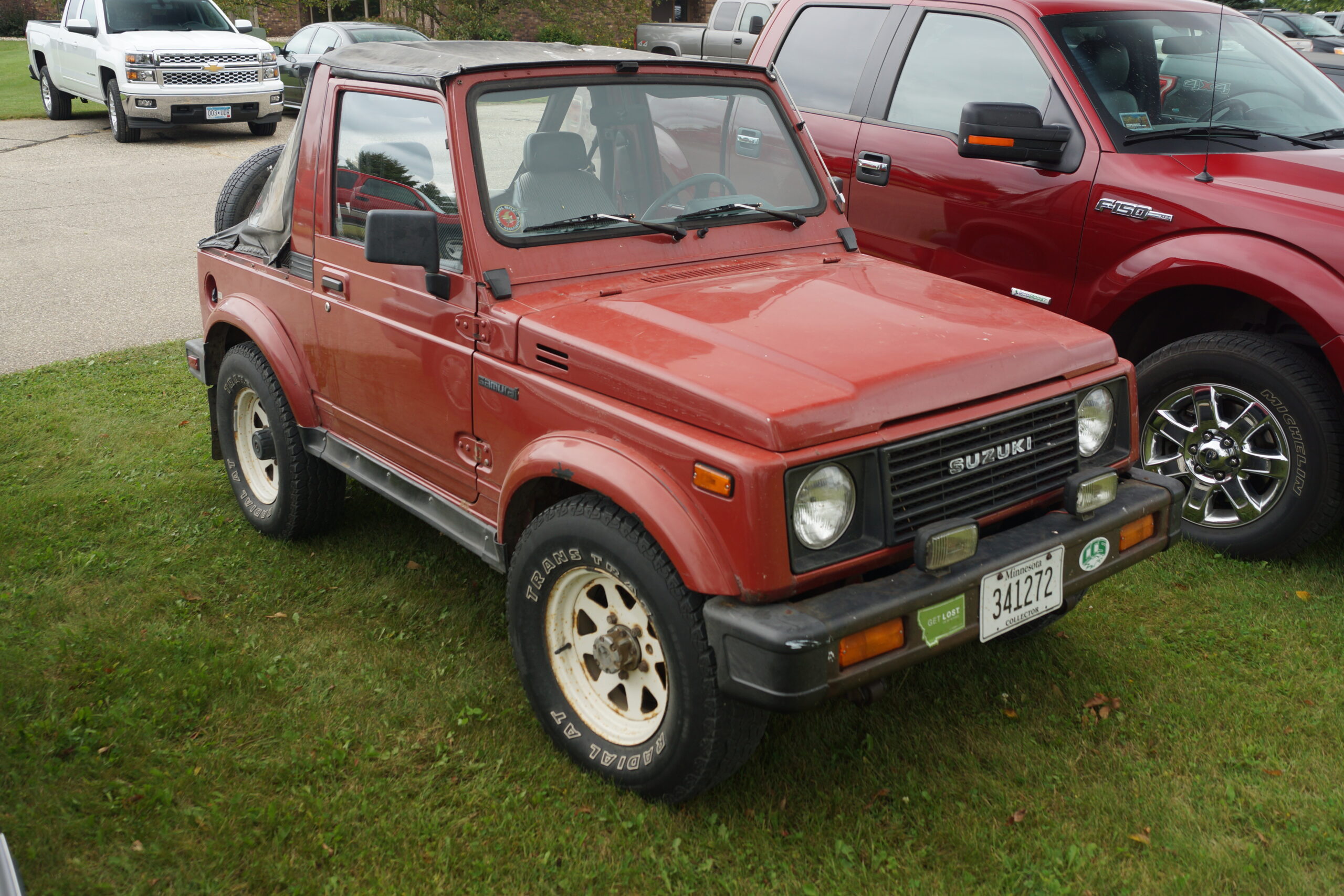
4. **Suzuki Samurai**For a brief, shining moment, the Suzuki Samurai seemed like a stroke of genius: an affordable, highly capable off-roader with a charismatic, boxy appeal reminiscent of a Jeep Wrangler. It enjoyed initial success due to this combination of accessibility and adventure. However, its brief moment in the sun was tragically overshadowed by a massive, undeniable safety flaw that cemented its place on any ‘worst cars’ list, leaving American soil permanently in 1996.
The glaring problem? The Suzuki Samurai was notorious for its alarming tendency to tip over. Whether under strong winds, during abrupt maneuvers, or through aggressive cornering, this vehicle earned a swift and damning reputation as a hazardous ride. The unflattering safety rating of “not acceptable” from Consumer Reports, prominently highlighting its propensity to flip, sent shivers down the spine of potential buyers and tarnished its image irreparably. This flaw alone placed the Samurai among the ranks of Japanese vehicles to be extremely wary of, particularly for those who prioritize safety above all else.
Despite its undeniable cult following among off-road enthusiasts and its potential as a fun, go-anywhere machine, the Samurai’s fundamental stability issues were simply too significant to overlook. Its bare-bones approach to comfort and its decidedly unrefined on-road performance further limited its appeal to a very niche market. It was a vehicle designed for rugged terrain, but its inherent instability made even moderate speeds on paved roads a gamble, a trade-off few were willing to make.
The Samurai’s story serves as a crucial reminder that while charm and capability can draw buyers in, foundational safety failures will ultimately define a vehicle’s legacy. It’s a clear-cut case where critical safety concerns utterly overshadowed any positive attributes, turning a promising concept into a cautionary tale of what happens when design priorities miss the mark on the most essential aspect of driving: staying upright.
Read more about: Revving Up Your Portfolio: 14 Once-Overlooked Vintage Cars Poised for Explosive Investment Growth
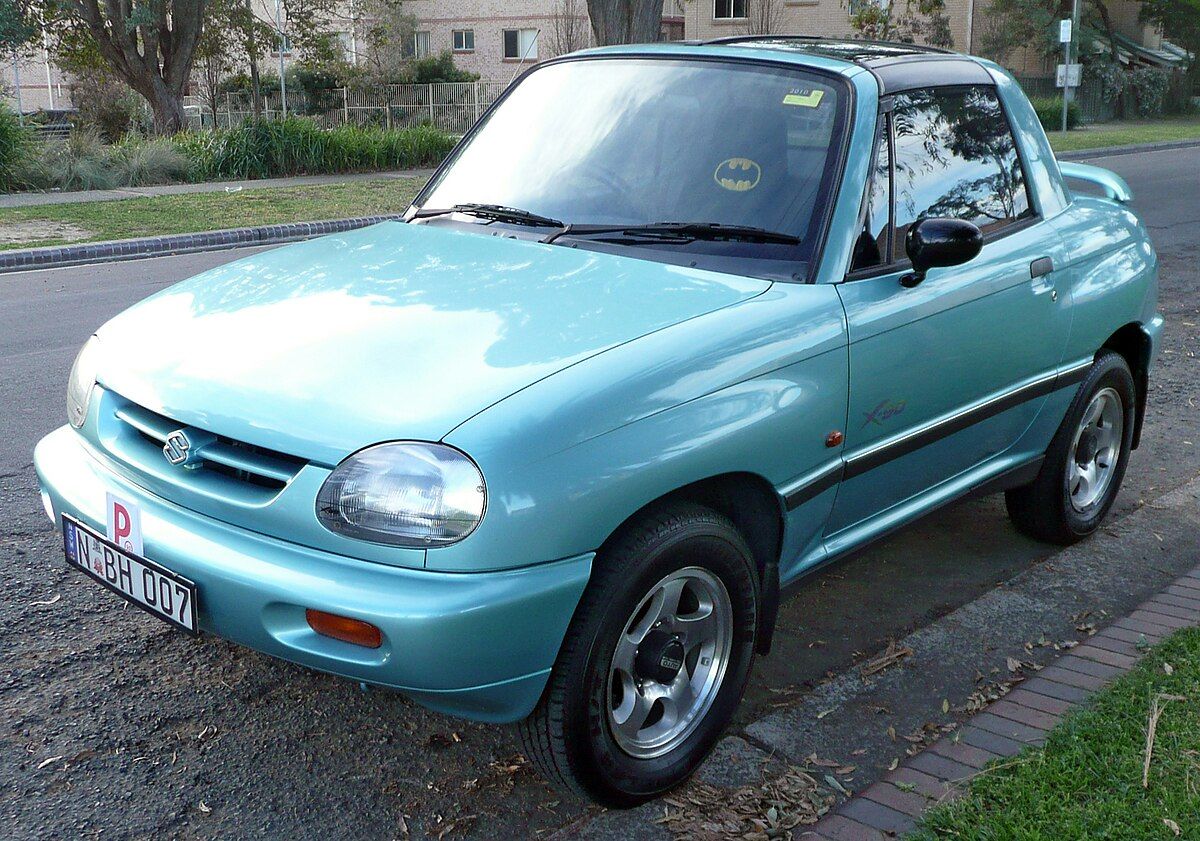
5. **Suzuki X-90**If the Suzuki Samurai was a misstep, the Suzuki X-90 was the company tripping over its own feet again, proving that sometimes manufacturers don’t learn from their past failures. Conceived to break the mold with a truly unique design, the X-90 instead broke expectations and baffled consumers, further solidifying Suzuki’s unfortunate reputation among bad Japanese automakers. This vehicle wasn’t just quirky; it was an automotive enigma that struggled to find its identity, or an audience for that matter.
The X-90’s design perplexed more than it impressed. Its peculiar T-top roofing and two-door layout, coupled with an appearance that left many scratching their heads – was it a coupe, a sports car, or the front half of a pickup truck? – made it an oddity rather than a trendsetter. This struggle to categorize the vehicle translated directly into its sales figures, which reflected a market that simply couldn’t embrace such an unconventional offering. It was distinctive, yes, but not necessarily what anyone actually desired.
Underneath its perplexing exterior, the X-90 offered little to redeem itself. Boasting a mere 90 horsepower, its performance was as uninspired as its design was unusual. It struggled to provide anything beyond rudimentary propulsion, failing to deliver the spirited drive that its pseudo-sporty appearance might have hinted at. This combination of bizarre styling and lackluster power ensured its quiet, almost unnoticed, exit from Suzuki’s lineup.
For those browsing the used Japanese car market today, the X-90 is almost universally passed over. It’s remembered more for its sheer quirkiness and its inability to resonate with the market than for any actual capabilities. The X-90, much like its ill-fated predecessor, ultimately crawled into oblivion, a peculiar monument to a design philosophy that, in this instance, simply went too far off the rails.
Car Model Information: 1996 Suzuki X-90 4WD
Name: Suzuki X-90
Manufacturer: Suzuki
Aka: Suzuki Vitara X-90 (Europe)
Production: 1995–1997
Assembly: Iwata, Shizuoka
Class: Subcompact car
BodyStyle: coupe
Layout: Front-engine, rear-wheel-drive layout,Front-engine, four-wheel-drive layout
Chassis: Body-on-frame
Engine: SOHC,Suzuki G engine#G16A
Transmission: Automatic transmission,Manual transmission
Wheelbase: 2200 mm
Abbr: on
Length: 3710 mm
Width: 1695 mm
Height: 1550 mm
Weight: 1100 kg
Related: Suzuki Vitara
Predecessor: Suzuki Jimny#Second generation (1981)
Categories: All-wheel-drive vehicles, All articles with unsourced statements, Articles with short description, Articles with unsourced statements from August 2018, Cars introduced in 1995
Summary: The Suzuki X-90 is a front engine, rear or four wheel drive, two door, two seater car manufactured and marketed by Suzuki for the model years 1995-1997. Derived from the Suzuki Vitara, the X-90 featured a T Section removable roof. Replacing the Samurai in the market in the United States, Suzuki began marketing the X-90 in Japan by the end of 1995, and in western markets in April 1996.
Get more information about: Suzuki X-90
Buying a high-performing used car >>>
Brand: Suzuki Model: X-90
Price: $5,000 Mileage: 146,943 mi.
Read more about: Remember These? 14 Forgotten Cars That Were Cooler Than You Think and Deserve a Second Look!
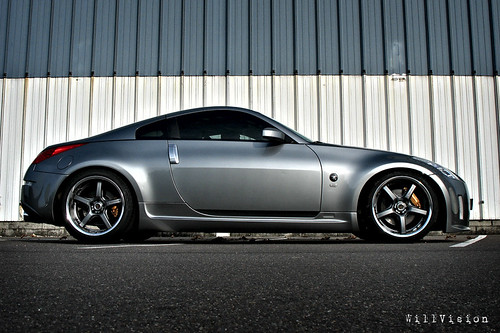
6. **Nissan 350 Z**It might come as a genuine shock to see Nissan, a brand often celebrated for its performance cars, make an appearance on a list of vehicles to avoid, especially when discussing the iconic 350Z. This sports coupe was undeniably popular among driving enthusiasts for its robust performance, sharp styling, and engaging driving dynamics, embodying much of what makes a Z-car so desirable. Yet, beneath its muscular exterior and enthusiast appeal, the 350Z harbored a less desirable, and far more serious, title: one of the most dangerous cars on the road.
The alarm bells started ringing loud and clear with unsettling statistics emerging from various safety studies, which consistently highlighted a high fatality rate associated with the Nissan 350Z. This wasn’t just about fender-benders; it pointed to a deeply concerning pattern when accidents occurred. It underscores a crucial, often overlooked, aspect of car ownership: the critical importance of considering safety alongside raw performance figures, no matter how appealing the latter may be.
The primary concern underpinning these alarming safety statistics was a significant flaw: faulty airbag software. Imagine the terror of relying on a critical safety system only to find it potentially compromised during the very moments you need it most. This systemic issue cast a long, dark shadow over the 350Z’s otherwise impressive performance credentials, transforming it from a mere technical glitch into a fundamental breach of driver and passenger safety.
This vehicle’s story is a vital, albeit somber, lesson in the automotive world: robust horsepower figures and a thrilling driving experience do not, by themselves, equate to a safe one. The Nissan 350Z stands as a sad example of a car that, despite its strong performance capabilities and widespread popularity, was among the most unsafe cars ever produced due to a critical safety system defect. It’s a stark reminder that sometimes, the thrill of the ride can come at an unacceptably high cost.
Car Model Information: 2004 Nissan 350Z
Name: Nissan 350Z (Z33)
Manufacturer: Nissan
Aka: Nissan Fairlady Z
Production: July 2002–2008 (Coupe),2003–2008 (Roadster)
Assembly: Yokosuka, Kanagawa,Kaminokawa, Tochigi
Designer: Ajay Panchal at Nissan Design America (2000)
Class: Sports car
BodyStyle: hatchback,Roadster (automobile)
Platform: Nissan FM platform
Related: Infiniti G35,Nissan Skyline#V35
Layout: Front mid-engine, rear-wheel drive layout
Engine: Nissan VQ engine#VQ35DE,Nissan VQ engine#VQ35HR
Transmission: Jatco 5R05 transmission,Automatic transmission
Wheelbase: 2649 mm
Abbr: on (2006–2008 Roadster)
Length: {{convert,4303,mm,in,abbr=on
Width: 1816 mm
Height: {{convert,1318,mm,in,abbr=on
Weight: convert
Predecessor: Nissan 300ZX
Successor: Nissan 370Z
ModelYears: 2003–2009
Categories: All articles needing additional references, All articles with dead external links, All articles with failed verification, All articles with unsourced statements, Articles needing additional references from August 2011
Summary: The Nissan 350Z (known as Nissan Fairlady Z (Z33) in Japan) is a two-door, two-seater sports car that was manufactured by Nissan Motor Corporation from 2002 until 2009 and marks the fifth generation of Nissan’s Z-car line. The 350Z entered production in 2002 and was sold and marketed as a 2003 model from August 2002. The first year there was only a coupe, as the roadster did not debut until the following year. Initially, the coupe came in Base, Enthusiast, Performance, Touring and Track versions, while the Roadster was limited to Enthusiast and Touring trim levels. The Track trim came with lightweight wheels and Brembo brakes, but its suspension tuning was the same as all other coupes. The Nissan 350Z was succeeded by the 370Z for the 2009 model year, although the roadster was sold alongside the 370Z for 2009.
Get more information about: Nissan 350Z
Buying a high-performing used car >>>
Brand: Nissan Model: 350Z
Price: $25,999 Mileage: 75,623 mi.
Read more about: Red Flag Alert: Critical Transmission Problems in Popular Pickup Trucks Around the 90,000-Mile Mark
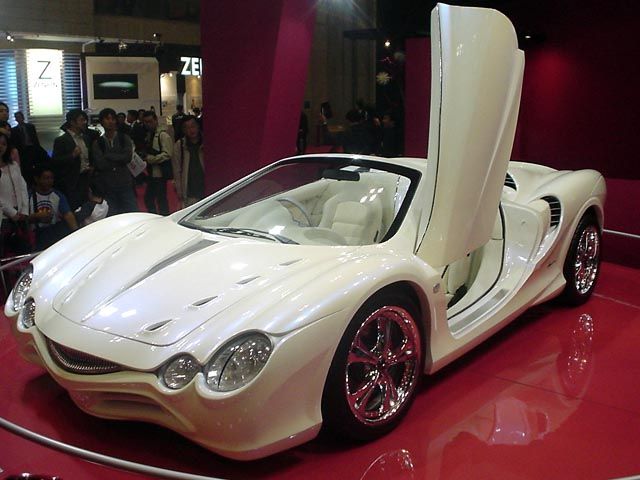
7. **Mitsuoka Orochi**The Mitsuoka Orochi, with a name derived from an eight-headed legendary serpent, certainly aimed for mythical status with its boldly unconventional design. This car presented itself with a visual drama that promised something truly extraordinary, something otherworldly even. However, much like a legendary creature that fails to live up to its fearsome reputation, the Orochi fell dramatically short of the expectations its moniker and outlandish looks might suggest, quickly becoming a symbol of superficial automotive ambition.
Underneath that undeniably striking, almost predatory exterior, lay a secret that was far from impressive: a V6 engine delivering a mere 230 horsepower. For a car that looked like it could devour the road, this output was profoundly underwhelming. To put it in perspective for performance enthusiasts, the Orochi could only attain 60 mph in a rather leisurely 7 seconds. In a segment where rivals were clocking significantly faster times and boasting much more potent powertrains, this performance figure was a profound disappointment and a stark contrast to its aggressive aesthetic.
This is a car that serves as an unequivocal reminder that looks can be incredibly deceiving. The Orochi was, emphatically, more show than go. It possessed the visual flair of a supercar, the presence of a unique exotic, but the actual dynamic capabilities of a much more pedestrian machine. It simply could not keep pace with its peers, failing to deliver the exhilarating driving experience that its dramatic styling so loudly proclaimed.
As such, the Mitsuoka Orochi earned itself an uncomfortable, yet deserved, spot among the worst Japanese sports cars, not for egregious mechanical failure in the traditional sense, but for a profound disconnect between its audacious presentation and its utterly underwhelming performance. It stands as a curious monument to a bold design idea that, regrettably, forgot to bring the muscle to back up its monstrous looks.
Read more about: The 23 Most Ambitious Automotive Failures
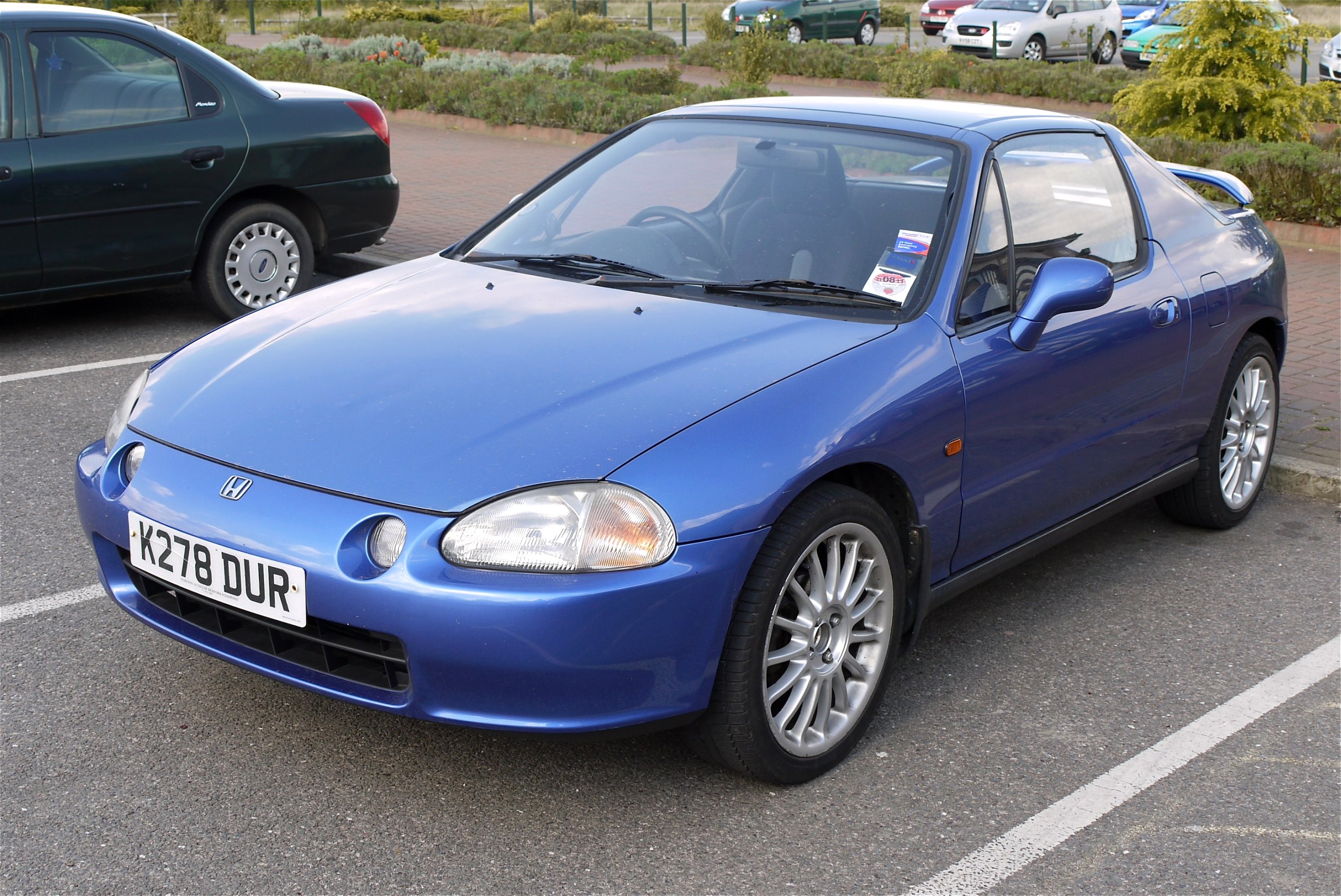
8. **Honda CRX Del Sol**Ah, the Honda CRX Del Sol. It was supposed to be the shining successor to the beloved CR-X, carrying forward a legacy of spirited driving and Honda reliability. Instead, it became a cautionary tale, demonstrating that even a manufacturer as esteemed as Honda can, at times, spectacularly miss the mark. This model, unfortunately, ended up being nothing short of “terribly disappointing,” as HotCars.com pointed out, leaving a rather sour taste in the mouths of enthusiasts.
The Del Sol was plagued by a host of issues that relentlessly chipped away at its anticipated appeal. Owners routinely reported problems with notoriously leaky roofs, which is hardly a feature anyone wants in a supposedly fun, open-top vehicle. Adding insult to injury, warped brake rotors were a frequent complaint, leading to frustrating and often expensive maintenance that tarnished the storied CRX lineage.
Beyond these mechanical headaches, the driving experience itself left much to be desired. The cabin was often described as unacceptably noisy, detracting significantly from any sense of sporty enjoyment the car aimed to provide. Far from being the nimble, engaging coupe its predecessor was, the Del Sol seemed to revel in its own mechanical melancholy, proving itself to be, in many instances, nothing short of a lemon.
Its failure to live up to the high standards set by its forbearers serves as a stark reminder that even models from reputable brands can unfortunately find themselves among the worst vehicles in their lineup. For those hoping for a true CRX replacement, the Del Sol was a deflating experience, cementing its place as a Japanese car best left in the annals of automotive history.
Car Model Information: 2021 Nissan Rogue SL
Name: Honda CR-X del Sol
Caption: 1994 Honda Civic del Sol Si
Manufacturer: Honda
Aka: Honda Civic del Sol,Honda del Sol,Honda CRX
Production: 1992–1998
ModelYears: 1993–1998
Assembly: Suzuka, Mie
Class: Sport compact
BodyStyle: Roadster (automobile)
Layout: Front-engine, front-wheel-drive layout
Chassis: EG1, EG2, EH6
Related: Honda Civic (fifth generation),Honda Integra#3
Engine: Honda D engine#D15B7,Honda D engine#D15B VTEC,Honda D engine#D16Z6,Honda B engine#B16A3
Transmission: Automatic transmission
Wheelbase: cvt
Length: cvt
Width: cvt
Height: cvt
Weight: cvt
Predecessor: Honda CR-X
Designer: Yoshikazu Kigoshi (1989)
Categories: All articles needing additional references, Articles needing additional references from September 2014, Articles with short description, Cars discontinued in 1998, Cars introduced in 1992
Summary: The Honda CR-X del Sol (marketed in other markets as the Honda Civic del Sol, Honda del Sol and the Honda CRX) is a two-seater targa-top car manufactured by Honda from 1992 until 1998. Despite the body resemblance to a mid-engine car design, the del Sol uses a front-engine layout based on the fifth-generation Civic and was the successor to the Honda CR-X.
The Spanish name del Sol translates to of the sun, and refers to the car’s opening roof. The del Sol featured a removable aluminum hardtop that stowed onto a hinged frame in the trunk and a motorized drop-down rear window. Manual and automatic “TransTop” roofs were available in select markets. It is the first open-air Honda sold in the United States.
Production and sales ended with the 1997 model in North America and 1998 elsewhere.
Get more information about: Honda CR-X del Sol
Buying a high-performing used car >>>
Brand: Honda Model: CRX Del Sol
Price: $20,995 Mileage: 117,217 mi.
Read more about: Bona Fide Sleeper Sedans That Cost Less Than A Corolla: Unleashing Hidden Automotive Giants on a Budget
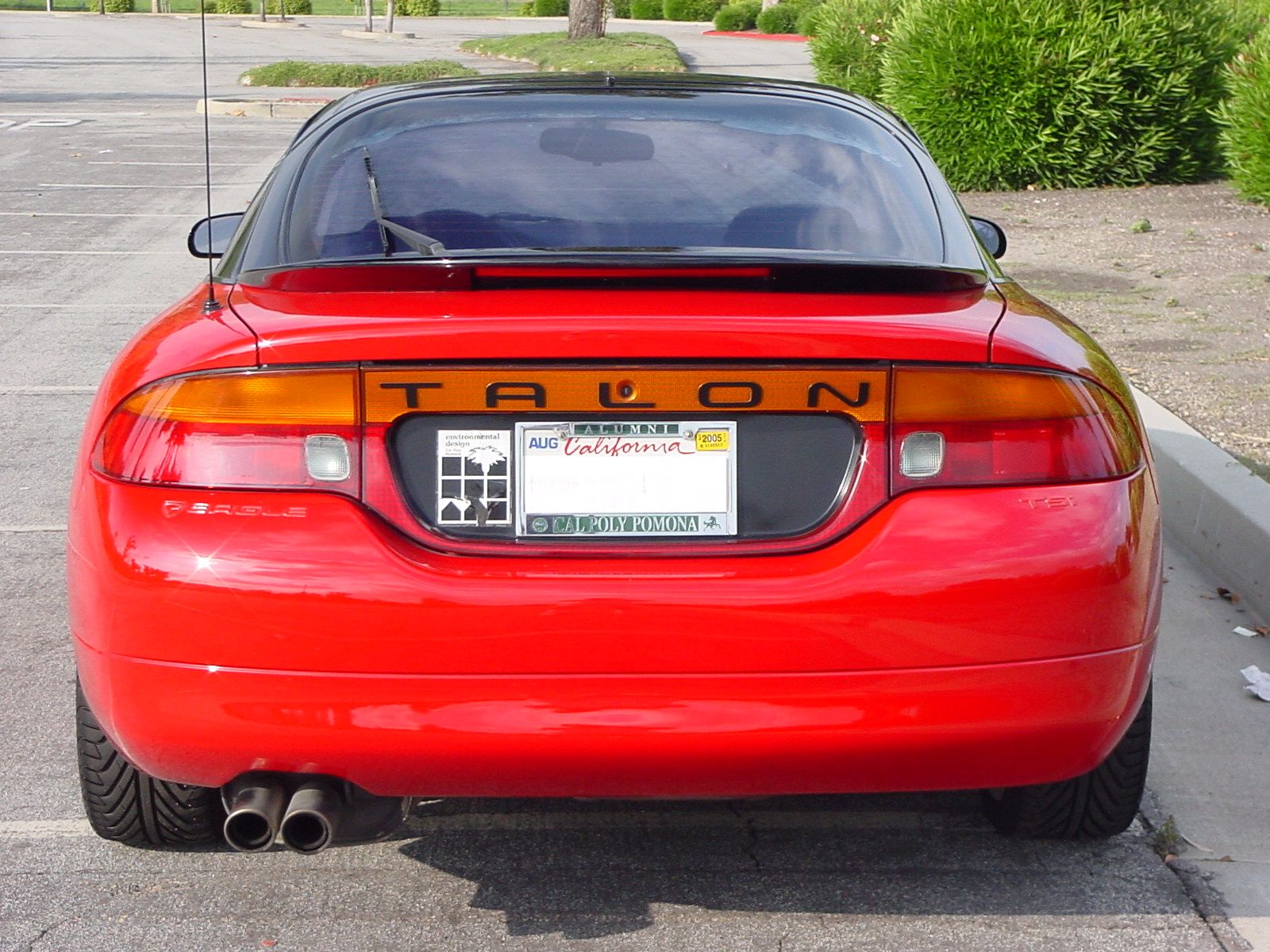
9. **Eagle Talon**The Eagle Talon is a fascinating, if ultimately flawed, chapter in automotive history, born from a rather ambitious collaboration between Chrysler and Mitsubishi. The idea was to fuse American design flair with the renowned precision of Japanese engineering, creating a vehicle that offered the best of both worlds. Sadly, what emerged from this partnership was a car notorious for its unreliability, earning itself a solid spot on our list of regrettable buys.
Owners of the Eagle Talon quickly discovered a vehicle riddled with persistent mechanical gremlins. The list of problems was extensive and deeply frustrating, ranging from bad gaskets that led to costly leaks to faulty differentials that compromised driveability and safety. These weren’t isolated incidents; they were a litany of other mechanical failures that collectively made the Talon a nightmare to own and maintain.
Experts in the automotive world quickly began advising against purchasing this vehicle, a damning indictment for a car born from such promising parentage. It swiftly became one of those Japanese-manufactured vehicles that, despite its potential, delivered far more headaches than thrills. For anyone navigating the treacherous waters of the used car market, the Talon is consistently highlighted as a prime example of a “bad Japanese car” that should be definitively avoided.
Its story serves as a potent reminder that even when two automotive giants combine their forces, the result isn’t always a masterpiece. Sometimes, despite the best intentions, you just end up with an Eagle that struggles to fly, firmly grounding itself in the realm of the undesirable.
Read more about: Wallet Beware: 10 Cars Owners Say Become Major Money Pits After the Initial Thrill

10. **Mazda Capella**The Mazda Capella, known to many as the Mazda 626 in various markets, often started with a promising first impression. It offered a notably comfortable ride and was even recognized for its commendable noise, vibration, and harshness (NVH) control, suggesting a refined driving experience. However, beneath this veneer of civility lay a profound Achilles’ heel that would ultimately define its reputation and land it squarely on our ‘avoid’ list.
That critical flaw, the bane of many an owner’s existence, was its automatic transaxle. This component became a notorious sore point, leading to unpredictable and erratic shifting that could confound even the most patient of drivers. Imagine the frustration of a car that struggles to decide which gear it wants to be in, making for an utterly uninspired and often jarring drive.
This single, glaring issue with the automatic transmission was significant enough to overshadow the Capella’s otherwise decent handling and comfortable cabin. It cemented its place on the list of unreliable Japanese cars, proving that even a vehicle with several positive attributes can be undone by one critical, pervasive mechanical flaw. For those delving into Mazda’s historical lineup, the Capella’s automatic transmission woes serve as a common and compelling cautionary tale.
In fact, the fifth-generation Mazda 626 was remembered not just for its transmission troubles but also for engine reliability concerns, including overheating and premature wear. And let’s not forget the persistent battle with rust, particularly in regions where winter roads were heavily salted, adding another layer of expense and aesthetic decay to an already troubled package.
Read more about: Unmasking the Beasts: 14 Absolute Fastest Sleeper Sedans You Can Buy for Under $20,000

11. **Datsun F-10**The Datsun F-10 arrived on the American market with aspirations of innovation, aiming to carve out its own niche. However, its reception was anything but welcoming, with critics and consumers alike swiftly taking issue with both its unconventional design and its profoundly lackluster performance. This was a car that dared to be different, but in doing so, it largely alienated its potential audience.
The styling of the F-10 was, to put it mildly, widely criticized. It had an aesthetic that struggled to find admirers, leaving many scratching their heads rather than reaching for their wallets. And if the exterior wasn’t doing it any favors, the engineering certainly didn’t fare much better in the court of public opinion, failing to impress even those willing to look past its polarizing looks.
Ultimately, the F-10’s attempts at innovation were overshadowed by a litany of shortcomings, relegating it to the unenviable list of Japanese cars that simply missed the mark. It stands today as a compelling historical piece, a lesson in automotive design that clearly demonstrates a crucial principle: merely being first or different doesn’t automatically equate to being the best, or even good, in the competitive automotive landscape.
Its story is a testament to how a bold vision, if poorly executed or misunderstood by the market, can quickly turn into an automotive footnote, underscoring the delicate balance between distinctiveness and broad appeal. Sometimes, it’s just better to blend in than to stick out for all the wrong reasons.
Read more about: Decoding the Dream: 14 Affordable Classic Cars That Are a Joy to Own and Maintain for Every Enthusiast
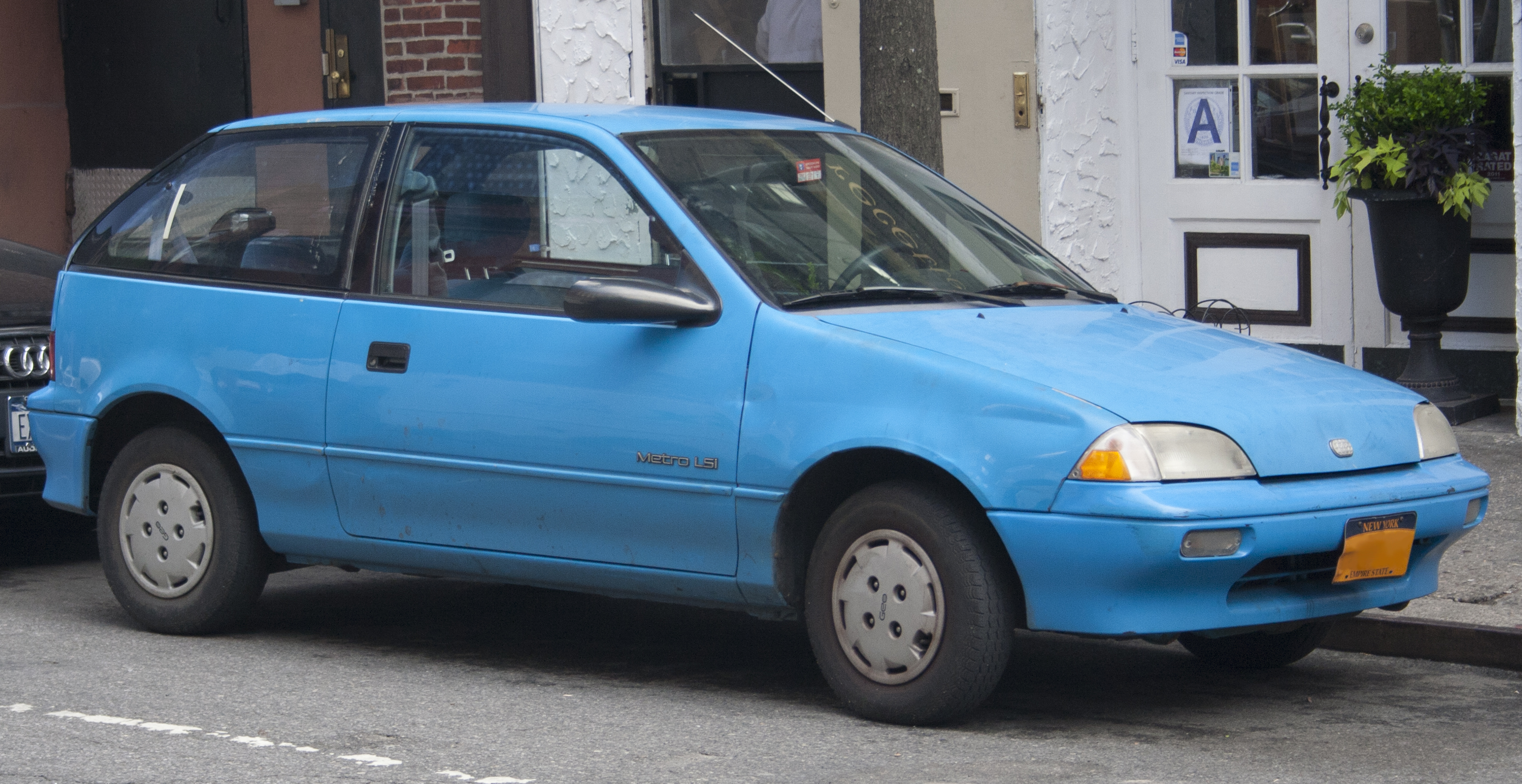
12. **Geo Metro**For many, the Geo Metro might evoke a sense of nostalgic simplicity, primarily marketed as a budget-friendly, no-frills choice for economical transportation. Indeed, in Japan, it was initially sold as the Suzuki Cultus, cementing its origin as a vehicle designed to be accessible. However, while it certainly succeeded in being affordable, it often represented the bare minimum in automotive design and function, making it a car that cut too many corners.
The Metro unapologetically prioritized low costs over virtually everything else, leading to significant compromises in performance and comfort. With a truly modest 50-horsepower engine, it constantly struggled for power, making even simple tasks like merging onto a highway feel like a white-knuckle adventure. The interiors were predictably sparse, lacking any semblance of luxury or modern amenity, reinforcing its utilitarian purpose.
In the grand lineup of Japanese-engineered vehicles, the Geo Metro is remembered less for any standout features and more for its almost brutal dedication to no-frills, economical transport. It was a car that simply got you from point A to point B, but did so with little enthusiasm, comfort, or power, defining the very essence of basic mobility.
This subcompact offering, particularly its early 2010s variants, was notoriously prone to a noisy cabin and a decidedly low-quality interior, further solidifying its reputation as a vehicle where compromise was king. Its weak engine and below-average fuel economy for its class, despite its small stature, meant that even its core promise of ultimate frugality was sometimes questionable, making it a hard sell for those who value more than just a low sticker price.
Car Model Information: 1991 Geo Metro Base 4dr Hatchback
Name: Geo Metro
Manufacturer: CAMI Automotive
Production: 1989–2001
Class: Subcompact car
Predecessor: Chevrolet Chevette,Suzuki Cultus
Successor: Chevrolet Aveo
Categories: 1990s cars, 2000s cars, All articles with dead external links, Articles with dead external links from December 2019, Articles with permanently dead external links
Summary: The Geo Metro was a variation of the Suzuki Cultus available in North America from 1989 through 2001 as a joint effort of General Motors (GM) and Suzuki. In the US, the Metro carried a Geo nameplate from 1989 through 1997, and a Chevrolet nameplate from 1998 to 2001. It evolved with the Cultus and its siblings over 13 years, three generations and four body styles: three-door hatchback, four-door sedan, five-door hatchback and two-door convertible—and was ultimately replaced in the General Motors lineup by a family of vehicles based on the Daewoo Kalos, the Chevrolet Aveo.
From 1985 through 1989, Cultus-derived models sold in North America—under the nameplates Suzuki Forsa, Suzuki Swift, Chevrolet Sprint, Geo Metro and Pontiac Firefly—were sourced from Suzuki’s facilities in Japan. Beginning in 1990, all North American M-cars were produced at CAMI Automotive, a 50–50 joint venture between General Motors and Suzuki in Ingersoll, Ontario, Canada, although Japanese production continued to source Canada bound sedan models. CAMI never reached its intended Metro/Firefly/Swift capacity.
In response to the waning popularity of smaller automobiles in the North American markets, Chevrolet/Geo had sold only 55,600 Metros in 1997, off from 88,700 the year before. While at its peak, Canadian Swift/Metro/Firefly production reached more than 100,000 vehicles a year, the number fell to just 32,000 in 2000. In April, 2001, CAMI confirmed that it had ended production of the Metro at its Ontario production facility.
Beginning in late 2003 as a model year 2004 car, the Daewoo Kalos, marketed variously as the Chevrolet Aveo, Pontiac Wave and Suzuki Swift+, effectively replaced the Metro/Firefly, although the Aveo is more of a Daewoo Lanos replacement as opposed to the Metro, the same time when Daewoo closed majority of its dealerships outside South Korea in 2002.
The Suzuki Swift was replaced by the Suzuki Aerio hatchback in 2002, although the Aerio also replaced the Suzuki Esteem.
Get more information about: Geo Metro
Buying a high-performing used car >>>
Brand: Geo Model: Metro
Price: $1,500 Mileage: 90,104 mi.
Read more about: From Giants of the Sea to Legends of the Skies: The Unfolding Saga of US Navy Aircraft Carriers
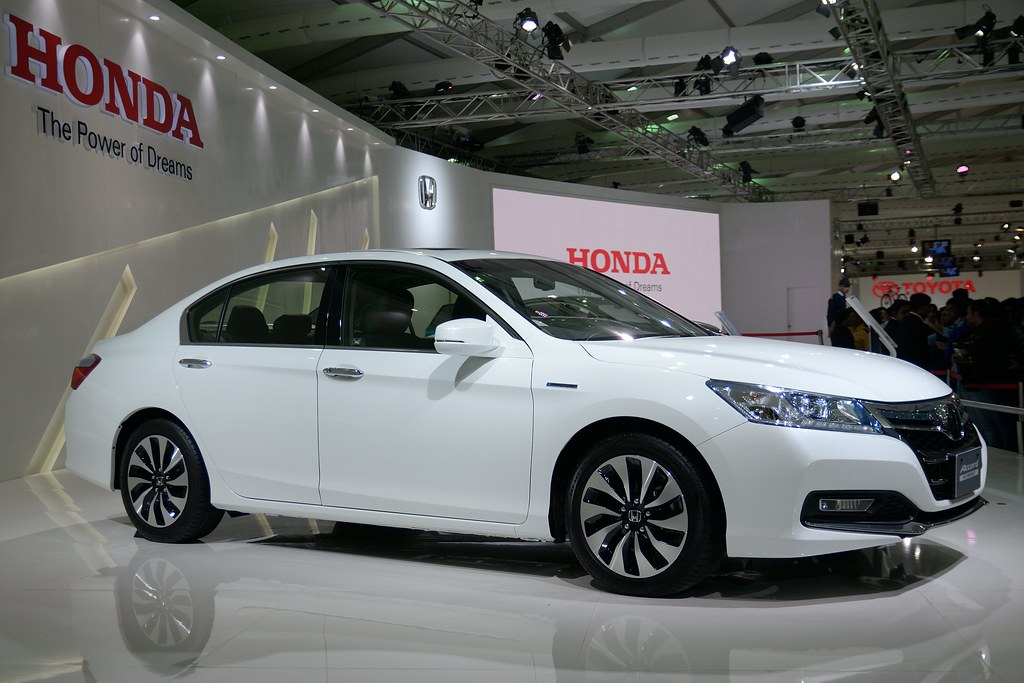
13. **Honda CR-Z EX**The Honda CR-Z EX represented an intriguing, albeit ultimately muddled, attempt to marry the seemingly disparate worlds of sportiness and hybrid efficiency. On paper, combining Honda’s reputation for engaging drives with pioneering hybrid technology sounded like a winning formula. In practice, however, it spectacularly failed to excel in either domain, resulting in a car that left many drivers scratching their heads.
Its hybrid powertrain, intended to offer both zest and frugality, unfortunately, delivered neither. Instead, drivers were met with sluggish performance that felt profoundly underwhelming for anything marketed as a sports coupe. To compound this identity crisis, its fuel economy, while decent, often didn’t achieve the truly high standards typically associated with dedicated hybrids, leaving it in an awkward middle ground.
Beyond its performance woes, long-term reliability concerns began to surface, particularly revolving around the battery system and its complex electrical components. This eroded confidence in a brand typically synonymous with bulletproof dependability, diminishing the CR-Z EX’s overall attractiveness as a long-term investment. It simply couldn’t shake off its dual-identity crisis.
As if that wasn’t enough, the CR-Z EX was also criticized for practical shortcomings. Its interior was notoriously cramped, and cargo space was severely limited, further narrowing its appeal in the competitive compact car segment. Auto experts were unflinching, with one noting the ride was “miserably uncomfortable” and plagued by “a lot of road noise entering the cab.” The rear seat was famously deemed “useless, tiny,” and the car was reportedly “not easy to merge due to the difficulty of seeing things beside you.” All told, it was a two-seater that was “nothing like a sports car” – not fast, not quiet, and it handled poorly, making it a profound disappointment for those who dared to hope for a thrilling, efficient ride.
Car Model Information: 2021 Nissan Rogue SL
Name: Honda CR-Z (ZF1/ZF2)
Manufacturer: Honda
Production: 2010–2016
ModelYears: 2011–2016
Assembly: Suzuka, Mie
Class: Sport compact car
BodyStyle: liftback
Layout: Front-engine, front-wheel-drive
Related: Honda Insight,Honda Fit Hybrid
Engine: ubl
Motor: MF6 DC brushless motor
Transmission: Continuously variable transmission
Wheelbase: 2435 mm
Abbr: on
Length: 4080 mm
Width: 1740 mm
Height: 1395 mm
Weight: convert
Predecessor: Honda CR-X,Honda Insight#First generation,Honda CR-X del Sol
Categories: All Wikipedia articles in need of updating, All articles needing additional references, All articles with dead external links, All articles with unsourced statements, Articles needing additional references from November 2023
Summary: The Honda CR-Z is a sport compact hybrid electric vehicle manufactured by Honda and marketed as a “sport hybrid coupe.” It combines a gasoline-electric hybrid drivetrain with features typical of a sports car, including a standard six-speed manual transmission and a 2+2 seating layout (except in North America, where it was offered only as a two-seater).
The CR-Z was seen as a spiritual successor to the second-generation Honda CR-X, sharing similarities in name and exterior design.
In the United States, the CR-Z was classified as an Advanced Technology Partial Zero Emissions Vehicle by the California Air Resources Board. It was the third Honda hybrid available with a manual transmission, following the Insight and Civic Hybrid, and the only one in its class to offer this option.
The CR-Z used the sixth generation of Honda’s Integrated Motor Assist (IMA) technology, first introduced with the original Insight. Sales began in Japan in February 2010, followed by the United States in August 2010. Production of the CR-Z ended at the end of 2016 to make room for the Accord Hybrid and Clarity.
Get more information about: Honda CR-Z
Buying a high-performing used car >>>
Brand: Honda Model: CR-Z EX
Price: $20,995 Mileage: 117,217 mi.
Read more about: Dream Cars That Will Make You Scream ‘Shut Up and Take My Money!’
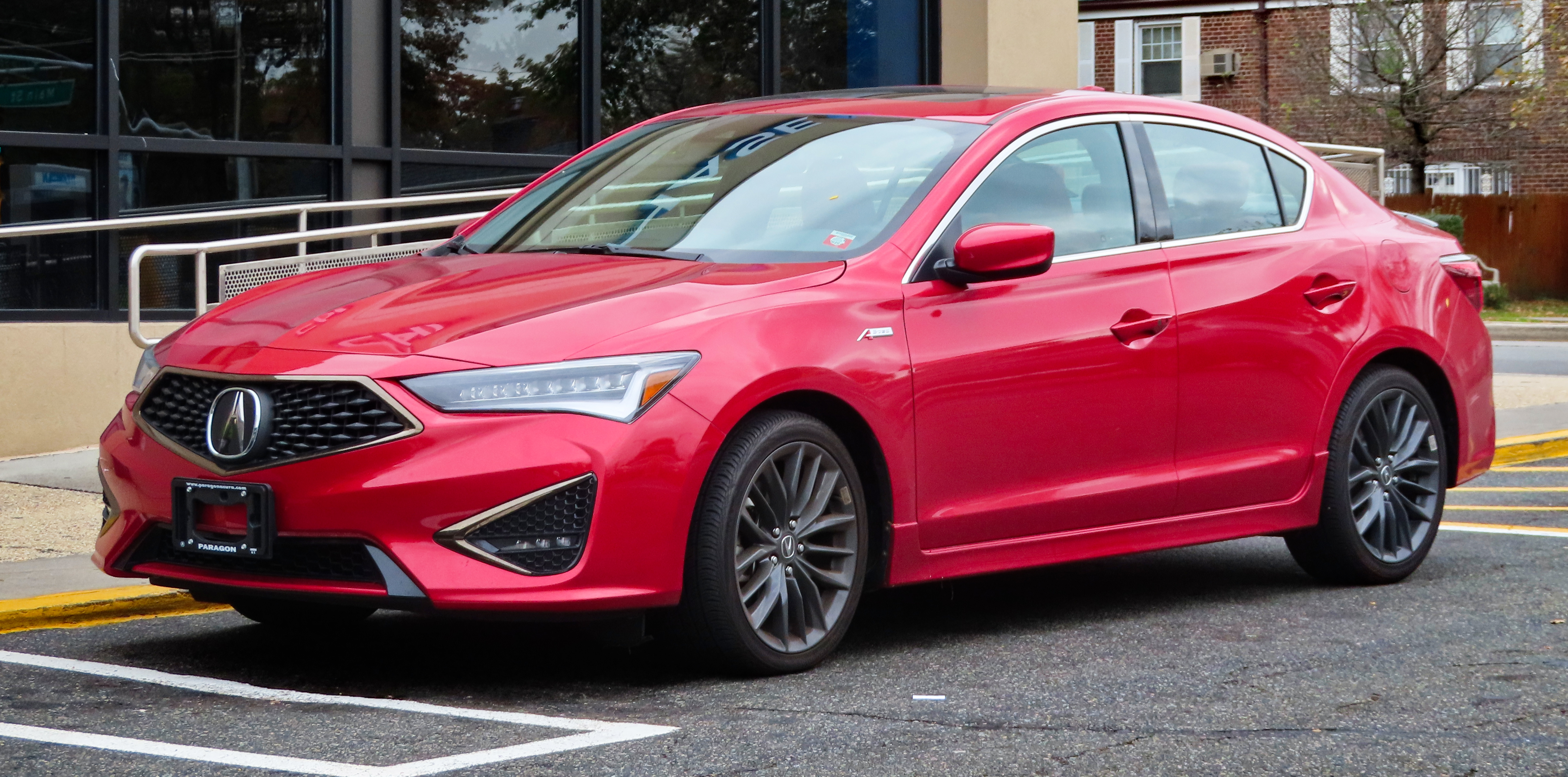
14. **Acura ILX (Early Models)**When Acura launched the ILX, the intention was clear: to create an accessible entry-level luxury sedan, a stepping stone into the premium world of Honda’s upscale division. The ambition was laudable, but the execution, particularly in its early models, fell significantly short of delivering on that crucial luxury promise, leaving buyers questioning their investment.
A primary criticism leveled against the early ILX models was their uncanny resemblance and shared componentry with their less expensive Honda counterparts. While this might seem like a cost-saving measure, it ultimately detracted from the exclusive, premium feel expected from a luxury brand. The distinction between an Acura and a Honda blurred too much, making it hard to justify the higher price tag.
Adding to its struggles were significant drawbacks concerning its powertrain. Owners and critics alike reported a rough transmission and a palpable lack of engine refinement, issues that are simply unacceptable in a vehicle attempting to compete in the luxury segment. A smooth, quiet, and powerful drivetrain is fundamental to a premium experience, and the early ILX simply couldn’t deliver.
Furthermore, while the interior was certainly a step up from non-luxury compacts, it conspicuously failed to offer the quality, advanced features, or sophisticated ambiance expected from a true luxury market contender. This combination of perceived value issues, powertrain disappointments, and an uninspiring interior made early ILX models a particularly hard sell against more established and compelling luxury competitors. It was a luxury car that forgot to be luxurious.
**Final Thoughts on Navigating the Japanese Car Market**
There you have it, folks – a deep dive into the surprising, and sometimes frustrating, underbelly of the Japanese automotive world. While the Land of the Rising Sun continues to give us masterpieces of engineering and reliability, it’s clear that even the titans can stumble. We’ve dissected 14 models that, for various reasons, missed the mark, proving that a proud badge doesn’t always guarantee a trouble-free ride.
Car Model Information: 2021 Acura ILX Premium Package
Name: Acura ILX
Caption: 2019 Acura ILX A-Spec
Manufacturer: Honda
Production: 2012–2022,2012–2014 (ILX Hybrid)
ModelYears: 2013–2022,2013–2014 (ILX Hybrid)
Assembly: Greensburg, Indiana,Marysville, Ohio
Class: Compact executive car
BodyStyle: sedan (car)
Layout: Front-engine, front-wheel drive
Related: Honda Civic (ninth generation)
Engine: ubl
Motor: Brushless DC electric motor
Drivetrain: Integrated Motor Assist,parallel hybrid
Battery: Lithium Ion
Transmission: Automatic transmission,Manual transmission,dual-clutch transmission,Continuous variable transmission
Wheelbase: 105.1 in
Abbr: on (1.5 L hybrid)
Length: {{convert,179.1,in,mm,0,abbr=on
Width: 70.6 in
Height: 55.6 in
Weight: {{convert,2910-2954,lbs,kg,0,abbr=on
Predecessor: Acura CSX,Acura TSX
Successor: Acura Integra (DE)
ModelCode: DE1/2/3
Categories: Acura vehicles, All Wikipedia articles written in American English, Articles with short description, Cars discontinued in 2022, Cars introduced in 2012
Summary: The Acura ILX is a compact executive car manufactured and marketed by Honda under the Acura brand for the 2013–2022 model years, based on the ninth-generation Civic sedan. The ILX replaced the Canadian market exclusive Acura CSX. The gasoline-electric hybrid version was Acura’s first.
Get more information about: Acura ILX
Buying a high-performing used car >>>
Brand: Acura Model: ILX
Price: $21,000 Mileage: 19,503 mi.
Read more about: The Unstoppable Rise: 13 ’90s Icons That Are Now Automotive Goldmines – A Deep Dive into Their Explosive Value
From the ambitious misfires to the outright safety hazards, these vehicles serve as crucial reminders that thorough research is your best co-pilot. Whether it’s quirky design, mechanical malaise, or outright performance deficits, each of these cars stands as a testament to the fact that not all automotive gold glitters equally. So, as you embark on your next vehicle hunt, let these tales of caution guide your decisions. Choose wisely, drive confidently, and here’s to finding a ride that brings joy, not wrench-wielding headaches!


